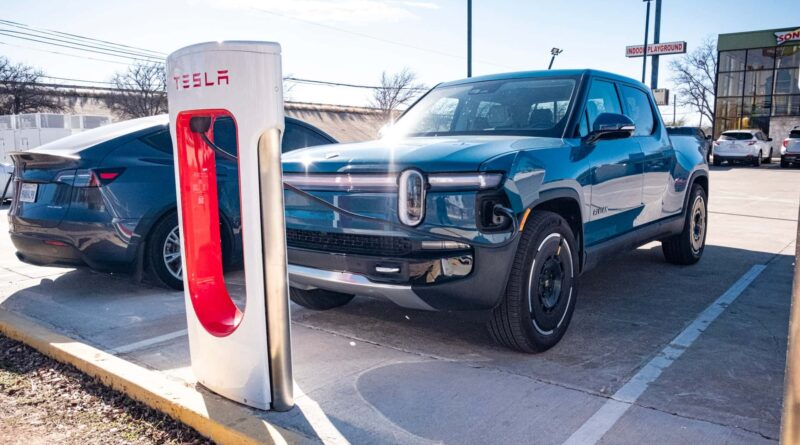EV public charging finally works as it should
- According to the latest study JD Power, public chargers EV are becoming increasingly reliable.
- The Tesla Supercharger network is the best for the owner’s satisfaction, but surprising content is second.
- Despite the increase in severity, EV drivers are not satisfied with the price of public billing.
The number of unsuccessful changes at public stations fell into its low insert in the Pec in Pec, shows a new study of JD Power. In other words, it is less likely that it will go to the public burden of EV and find that it is broken or that there is a very long line.
In this year’s issue of US study for public charging American experiences from the American electric vehicle, only 14% of the owners of EV said they visited the burden, but left without adding. This is a significant decline of five percentage points compared to last year.
This is good news, because no one wants to be on the juice in the charging desert, desperate after refilling, just to get to the fast DC drive and found that he was dead. However, the overall satisfaction with EV public infrastructure in the United States has actually declared since last year, and many of it have been dealing with non-on-ministers who have access to Tesla Supercharger.
Specifically, the respondent was dissatisfied with the increased determination of Tesla Supercharger prices compared to other competitors who are still trying to gain a firm presence on the market and therefore could appreciate their lower for the owners of the authorization.
The EV owners’ satisfaction with the cost of accounting their cars has fallen by 16 points for both DC fast chargers and level 2 chargers.
“Part of the decline is caused by a non-on-owner using Tesla Superchargers that provide a much less satisfactory user in relation to costs, in a compass with the cost of Tesla owners,” said Brent Gruber, Executive Director of EV Practice in JD Power.
“Moreover, in previous years, many fast DC charging networks maintained low prices when they developed on the market, while manufacturers regularly offer free incentives with vehicle purchases,” he said. “However, as the market is developing infrastructure and electricity rats are rising, charging prices have increased significantly in some boxes and directly influenced the overall experience with the ownership of EV.”
Yet the Tesla Supercharger network is still a king in terms of overall satisfaction. We have a 1,000 point scale, Tesla’s fast charging network leads a 709 -point way, followed by a surprising candidate: Red E, which is listed with 668 points, while the segment average is 654 points.
Chargepoint is the third with 619 points, Electrify America is fifth with 601 points, while the remaining operators completed a study with less than 600 points. EVGO has 579 points and Blink has 501 points.
On the level of level 2 charging, it is again Tesla, which takes the crown. While the average status for the segment is 607 points, Tesla’s Destination Chargers fixed strong with 661 points, followed by a hub with 628 points. Winding and flashing were below the diameter.
JD power measures solid across ten factors: easy charging, charging speed, physical fitness station, chargers’ availability, comfort, what to do when charging, how safe rent feels, easily finding, charging costs and ease of payment.
The study, which was conductive in cooperation with EV Driver App and Research FirmShare, was spread from January to June 2025, including 7,428 battery electric vehicles and plug-in hybrid electric vehicles.
(Tagstotranslate) charging
